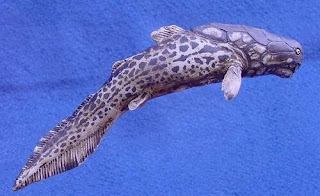There's a growing movement in the United States focused on changing things likeplace names that have, or are connected to, racist or sexist themes. These include institutional names like Fort Bragg (why would the Army name a post for Confederate General Braxton Bragg in the first place? Have they READ the guy's combat record?) and localities like Coon Lake in Washington state, now Howard Lake.
Things are moving slower, with more debate, in areas like the names of animals. Concerning birds especially, there's been some movement pushed by several scientific and volunteer bodies to change some comon names. McCown's longspur has been renamed because McCown was an ornithologist but also a Confederate general. (Photo below bythe Smithsonian.)
Hammond's flycatcher will go soon: Hammond was a Surgeon General who late in the 1800s was still writing that "Indians and Negroes" were subhuman. Scott's oriole, named for General Winfield Scott, despised by Native Americans for directing the forced relocation called the Trail of Tears, may go next. Ornithologists are arguing over the iconic Audubon, a scientific giant who, among other highly offensive actions, once traded slaves. There's a practical reason to not change all the challenged names abruptly: they're how birders and everyone else outside ornithology distinguish birds. Changes require education and updating of much documentation.
Some
non-bird terms like "squawfish" and "gypsy moth" are also
officially out, and oceanographer Kim Martini launched an effort in 2019 urging
scientists and media to stop using "Bobbit worm" for a polychaete also known as the sand
striker. The overall movement to rename species has been slow, though, because
neither governments nor scientific bodies have agreed on what guidelines to
apply. It's not just an American problem: in places like the Democratic Republic of the Congo and New Caledonia, the presence of
dozens of indigenous languages makes it a huge challenge to even identify the
"local" names. so almost all of the names applied by Western
scientists are still in place in scientific and general literature.
A topic that has been raised, if rarely so far, is changing binomial scientific names like Rhynchophanes
mccownii. Binomials are supposed to be fixed, forever, for scientific
precision. They allow, say, a scientist in Tahiti in 2021 to know exactly what
species was meant by an English naturalist in 1780. The International Commission
on Zoological Nomenclature (ICZN) doesn't even have a process for this.
Scientists have stopped using names the ICZN has deemed inaccurate (e.g.,
Linnaeus' Homo ferus, or wild man) or which are no longer valid because
the species has been reclassified, but there are procedures for that.
It's easier with modern discoveries: Western scientists have
begun asking indigenous people for names (as with the amphibian Tiktaalik
rosae, where the genus was suggested by Inuit elders in Nunavut [it's an
Inuktitut word for a local fish English-speakers call burbot]), and of course
scientists in Africa, Asia, and South America have long been working local
names into the binomials.
There's a lot to work out.
Don't forget: now available in all formats!
www.mattbille.com







